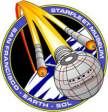 |
 |
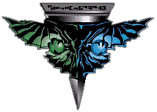 |
Postwar Romulan Ships
![]() Overview
Overview![]()
![]() Scenes
Scenes![]()
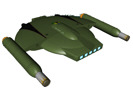 Romulan Cracker created by Thomas Pemberton |
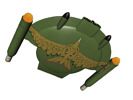 Romulan Cracker created by Thomas Pemberton |
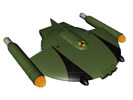 Romulan Cracker created by Thomas Pemberton |
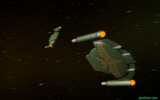 Romulan Crackers created by Thomas Pemberton |
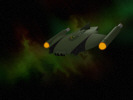 Cracker and green nebula created by Thomas Pemberton |
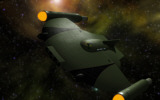 Lonely Cracker created by Thomas Pemberton |
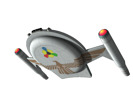 Romulan Capsize created by Thomas Pemberton |
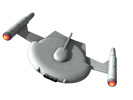 Romulan Capsize created by Thomas Pemberton |
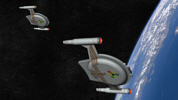 Romulan Capsizes in orbit created by Thomas Pemberton |
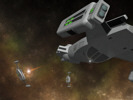 D5 against Capsize created by Thomas Pemberton |
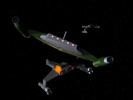 Romulan-Klingon Combat created by Thomas Pemberton |
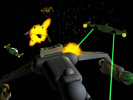 Romulan-Klingon Combat created by Thomas Pemberton |
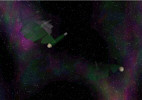 Uncloaking Crackers created by Terradyhne |
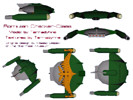 Cracker views created by Terradyhne |
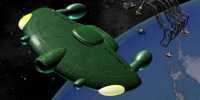 Cataract maiden voyage created by Christopher Griggs |
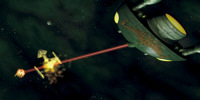 In battle against the Klingons created by Christopher Griggs |
 Cricket - a marvel in the darkness created by Arcas |
![]() History
History![]()
Notes on Sources
Any analysis of Romulan cruisers in the century after the Earth-Romulan War is complicated by the fact that Starfleet never observed, encountered, or examined any Romulan vessels during that time. After signing the treaty ending the war in 2160, the Romulans withdrew behind the Neutral Zone, not to emerge until the border incident of 2266.
Although the Romulans had no contact with the Federation, they had numerous skirmishes and battles with the Klingon Empire along their common border. Since the end of the Dominion War, the Klingons have given Federation historians limited access to their military archives concerning Romulan warships they encountered. This information is no longer of direct military value but is of immense historical value for students of Romulan technology.
However, these Klingon military records do not give a complete picture of postwar Romulan warships. Federation citizens generally believe that Klingons prefer to pass down information through story and song rather than through written records. While this belief is true to some extent, the Klingon military does maintain extensive archives, but what they contain is rather selective. Klingon records tend strongly towards battle reports, personal essays, and commendations, unlike the almost obsessively detailed records of procurement orders, equipment specifications, and personnel transfers kept by the United Earth Stellar Navy (UESN) and the Federation Starfleet. In addition, the Federation historian must naturally approach the Klingon records with a healthy dose of skepticism, since combat reports are often intended to glorify a ship's commander rather than to give an accurate account of a specific event. Embarrassing actions often go unreported or become valiant struggles against overwhelming odds. For example, the number of Romulan vessels destroyed is often exaggerated, as are the capabilities of Romulan ships that have "gotten away." In contrast, damage to Klingon ships is often minimized or attributed to "extremely powerful weapons of unknown design."
Furthermore, the Klingons were never able to capture any Romulan warships intact; like the UESN, the Klingon Imperial Fleet soon discovered the Romulans' tendency for self-destruction to avoid capture. The Klingons did receive a Cricket-class cruiser in 2263 during their brief, ill-advised alliance with the Romulans. However, their technical analysis of this ship, other than the cloaking device, was surprisingly cursory, perhaps owing to the Klingons' low regard for Romulan technology of that time. The fate of this ship is unknown.
A final source of information is a Romulan commander who defected to the Federation in 2268. This individual served upon both Capsize-class and Cricket-class cruisers. Extensive debriefing by Starfleet Intelligence has given us much insight into Romulan history, equipment, doctrine, and strategy, particularly of the mid-23rd century.
Therefore, our knowledge of Romulan ships of the century after the War is based largely upon the testimony of a single Romulan commander and upon Klingon military records whose accuracy and completeness are suspect. Accordingly, our conclusions are necessarily speculative and cannot be considered final pending access to more comprehensive and unbiased sources of information.
The Post-War Romulan Empire
At the end of the Earth-Romulan War in 2160, the Romulan Imperial Guard was demoralized and in ruins. Some 75% of all warp-capable ships had been destroyed; what remained were mostly obsolete types and point-defense laser and missile ships built late in the war to intercept attacking United Earth Stellar Navy (UESN) task forces advancing towards the Romulan Homeworlds. What had once been a mighty armada for interstellar conquest had been reduced to little more than a coastal defense fleet, barely able to monitor border zones and to police areas under Romulan Imperial control.
However, the Romulans' problems were not limited to the military sphere. The Romulan economy, in a futile attempt to supply the Imperial Guard with vessels in the numbers produced by the much larger and more diverse United Earth (UE) economy, had shifted almost entirely to a command economy. Now with the war over, the economy was moribund and barely able to supply basic commodities of daily life, even on the homeworlds of Romulus and Remus. Owing to the nearly complete destruction of the Romulan merchant fleet, the situation on outlying colony worlds was even more dire. Although internal security forces, which had been greatly strengthened during the War, prevented overt civilian dissent, chaos reigned among the ruling elite. Leaders most closely identified with the losing war effort were arrested, tried, and executed, effectively decapitating the government. The remaining factions, already decimated by witch hunts because of their less than whole-hearted support of the Praetor during the War, took vengeance upon their tormentors and fought for control of the government and the military with any means at their disposal. The Romulan Empress was politically isolated and became little more than a ceremonial figurehead controlled by whatever faction had seized power. This internecine combat removed the final vestiges of civilian Romulan government remaining after the War. Needless to say, this political turmoil made dealing with the Romulans' internal problems and external threats all the more difficult.
Late in the war and into the mid-2160s the Romulans rendered uninhabitable, then abandoned, many border colony worlds they had earlier fought hard to defend. This withdrawal was to consolidate a defensive sphere around the core worlds of the Empire and to deny the UE, and later the Federation, habitable invasion-staging areas near the border. As far as can be determined, the young Federation had no plans to break the war-ending treaty and invade Romulan space, although the Romulans could have offered little real resistance had they done so. The Romulans' border with the Federation was likely secure, but the establishment of the Neutral Zone and the founding of the Federation gave the Romulans little comfort. The Romulans were unable to conceive that the Humans would not seek ultimate retribution for their invasion; they regarded the Federation as an anti-Romulan alliance whose ultimate aim was the annihilation of their Empire, their culture, and their race. For the Romulans, the participation of the Vulcans, their erstwhile brethren, confirmed, rather than disproved, their belief in the Federation's imperialistic and genocidal nature.
In addition to the phantom threat posed by the Federation, the Romulans were confronted by a more concrete danger. News of the Earth-Romulan War had reached the Klingons, who sought to turn the Romulans' preoccupation with protecting their core worlds to their own advantage. Klingon activity along the Romulans' rimward frontier had increased significantly by the turn of the 23rd century. Until an alliance was established in the 2260s, the Romulans and Klingons fought numerous battles along their common border. Through the 2220s, little territory exchanged hands, as the Romulans used their superior technology to keep the encroaching Klingons at bay. However, by the 2230s the Klingons had mastered matter/antimatter (M/AM) reactors and, like the UE before them, gained a decisive technological advantage over the Romulans.
Descriptions of Ships
In the century after the end of the Earth-Romulan War, four major cruiser classes entered service with the Romulan Imperial Guard. They have been given the Starfleet reporting names of Cataract, Cracker, Capsize, and Cricket.
For the first 15 years after the War, the decimated Romulan fleet continued to operate the few Cabbage-class and Clavicle-class ships that had not been destroyed by the UESN. Cabbage cruisers were immense, lumbering mushroom-shaped cruisers displacing some half million tons (roughly 2.5 times heavier than a Constitution-class cruiser of a century later). Although thoroughly outclassed by UESN cruisers by the end of the war, they continued to be used as patrol cruisers and transports, and, with their warp nacelles removed, as border garrison ships until the 2190s. Clavicle cruisers had been introduced in 2159 and quickly proved to be the Romulans' most capable design with a top observed speed of wf 4.2. However, attempts to sustain this speed often resulted in catastrophic loss of the ship. The Klingons observed this ship in action until the 2210s, by which time numerous systems had likely been upgraded.
![]() Cataract-class Cruisers*
Cataract-class Cruisers*![]()
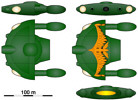 Orthographic views |
Deck plans, part 1 created by Allen Rolfes (see notes) |
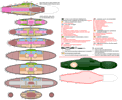 Deck plans, part 2 created by Allen Rolfes (see notes) |
Displacement: 120,000 t
| Overall | 1° Hull | 2° Hull | Nacelles | |
| Length [m] | 132.80 | 68.54 | 31.29 | 64.28 |
| Beam [m] | 123.61 | 123.61 | 61.92 | 17.86 |
| Draft [m] | 28.11 | 28.11 | 25.34 | 17.86 |
Crew complement: 300
Weapons: 1 plasma cannon, 2 missile launchers
Velocity: wf 3.3, cruise; wf 4.6, maximum
*All specifications are estimates unless otherwise noted.
The first new postwar Romulan cruisers were those of the Cataract class, which is believed to have entered service in 2175. Although its similarity to the preceding Clavicle class is clear, particularly its pedunculated twin nacelles and winged plan-form, Cataract had a lower-draft, simpler, rounded shape. The command section was a flat convex half-disk comprising the front half of the ship. The lower draft of the engineering section likely reflects the use of a toroidal tokomak-type fusion reactor instead of the spherical reactors used in all previous Romulan designs. The impulse drive unit also became a flattened deck similar to that of Starfleet vessels before 2250. The nacelles employed Bussard ramscoops at the leading edge of the hull. Weaponry included a single plasma cannon mounted in a large housing at the midline and fusion-tipped missiles fired from twin projectors mounted between the Bussards and the plasma cannon. Cataract was the first Romulan ship to exhibit a central, dorsal bridge module.
Klingon military archives include reports on 26 encounters with Cataract cruisers. These vessels are generally described as being faster and more maneuverable than contemporary Klingon ships. However, the greatest shock for the Klingons was the Romulans' plasma cannon. In 2185, three Klingon D3 cruisers pursued a single Cataract cruiser and brought it out of warp. As they closed with the Romulan ship in an attempt to board, the plasma cannon suddenly discharged once at a range of less than 500 m; the plasma bolt passed completely through one ship and then struck a second. The ensuing explosions destroyed the two Klingon ships as well as the Romulan ship. In an attempt to conceal the careless manner with which they had approached the outnumbered and apparently disabled Romulan ship, the commander of the surviving Klingon ship falsely reported they had been ambushed by five Romulan ships, three of which they managed to destroy before his surviving Klingon ship was forced to retreat.
Plasma cannons of the type in service from the Earth-Romulan War until the 2250s could be used in only limited tactical situations because they were incapable of supraluminal speeds. They were only effective against sublight or stationary targets or if fired into the predicted path of ships traveling at warp. However, plasma bolts could be devastating in appropriate situations, as the Klingons painfully discovered. When the plasma cannon was encountered by Starfleet in 2266, it had obtained a surprising new capability.
![]() Cracker-class Cruisers*
Cracker-class Cruisers*![]()
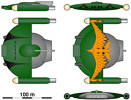 Orthographic views |
 Deck plans, part 1 created by Allen Rolfes (see notes) |
 Deck plans, part 2 created by Allen Rolfes (see notes) |
Standard displacement: 85,000 t
| Overall | 1° Hull | 2° Hull | Nacelles | |
| Length [m] | 110.51 | 61.12 | 46.95 | 88.15 |
| Beam [m] | 133.40 | 118.80 | 72.68 | 12.29 |
| Draft [m] | 19.00 | 16.25 | 19.00 | 12.29 |
Crew complement: 200
Weapons: 1 plasma cannon, 2 missile launchers, 2 laser cannons
Velocity: wf 3.6, cruise; wf 4.9, maximum
*All specifications are estimates unless otherwise noted.
The Cracker-class cruiser was first encountered by the Klingons in 2201. Its general appearance suggested a flatter, more streamlined development of the Cataract cruiser. Other changes included a smaller plasma-cannon port at the front of the primary hull and a larger engineering hull mounting a dorsal fin. The components that are most interesting for Federation historians are the nacelles, which were attached to the lateral margins of the primary hull. These nacelles strongly resembled those used on the Federation's Moskva-class cruisers, introduced in 2179, and raise the possibility of Romulan espionage.
Because the Federation remained unaware for more than a century after the war of the Romulans' descent from the Vulcan race, Romulan agents could have easily infiltrated the Federation and Starfleet. The recent revelation that the Vulcan Ambassador T'Pel was a Romulan agent shows the ease with which Romulans can still ascend to positions of power and influence within the Federation and remain undetected. Doing so would have been even simpler in the century after the war, as the Romulans were generally believed to resemble Humans even less than Andorians and Tellarites do. Entering the Federation itself was no significant obstacle because the Romulans developed effective cloaking technology decades before the Neutral Zone incident of 2266 and because the border was poorly monitored in most sectors.
Although Romulan espionage within the Federation is certainly possible, did it actually occur? The Romulans naturally refuse to comment on this issue, but a Romulan "admission" that they undertook no espionage during this time would be rather hard to believe. Defenders of Federation security agencies maintain that the similarity of certain features of Romulan postwar designs to contemporary Federation designs may simply be coincidental or superficial. After all, the Federation made no real effort to hide its ship designs, so simple mimicry by the Romulans is certainly possible. Another possible explanation for similarities in starship design is convergent evolution, the same mechanism that causes sharks, dolphins, and ichthyosaurs to resemble one another. According to this theory, for each warp factor there are optimal hull configurations common to all vessels.
However, historians who believe that Federation security was breached charge that the Federation, and Starfleet in particular, rather arrogantly believed that they held an insurmountable technological lead over any potential adversary and, therefore, guarded their secrets rather poorly or not at all. The defecting Romulan Commander has said that while she has no direct knowledge of Romulan spies operating within the Federation, it was commonly accepted by Fleet Commanders that information on metalloceramic alloys, energetic shielding, impulse-drive technology, warp-field dynamics, and nacelle design had been obtained from the Federation.
When Cracker-class cruisers first saw service in the early 2200s, their speeds and range were still significantly greater than those of comparable Klingon vessels. Results of ship-to-ship combat were accordingly in the Romulans' favor. However, circa 2230, the Klingons gained the upper hand, owing to the continuing improvement in their M/AM reactors, which allowed greatly increased ranges and speeds exceeding wf 6. Curiously, the Romulans continued to use only fusion reactors.
Why the Romulans did not make use of M/AM reactors to power their ships has long puzzled Federation historians. In particular, the Romulans' loss in their war with the UE can certainly be attributed in large measure to their continued reliance on fusion reactors. Although the UE had attempted to embargo M/AM reactors in the early 2160s, by the turn of the 23rd century, these reactors were standard equipment on both civilian and military starships throughout the Federation and among many unaligned powers. If the Romulans had wanted to, they could have simply obtained M/AM reactors from any number of sources, such as the Orions.
Several historians have speculated that religious or cultural beliefs prevented the Romulans from exploiting antimatter. According to one theory, the division of material existence into matter and antimatter and their mutual annihilation reflects a duality of nature that Romulans refuse to accept. Instead, the Romulans are said to believe in the unity of all nature, existence, and experience; this is supposedly a reaction to the Vulcan belief that portions of one's mind and personality can be neatly walled away and ignored. However, most historians are skeptical that the Romulans, who are generally considered a resourceful and pragmatic race, would so easily reject such a useful power source, especially one used by enemies past and present.
In fact, the failure of the Romulans to exploit antimatter may be due to a more concrete obstacle: the inability to mass-produce antimatter. Romulan dissident groups have reported that a catastrophic accident occurred at an antimatter production facility on one of the Romulan Homeworlds in the late 2170s or early 2180s. Reportedly, upwards of 10,000 people were killed and research into antimatter-related applications was banned. Although small-scale research into antimatter production possibly resumed after several years and continued until the 2210s or 2220s, M/AM reactors were not used by the Romulans until they received D7-class cruisers from the Klingons in the 2260s.
![]() Capsize-class Cruisers*
Capsize-class Cruisers*![]()
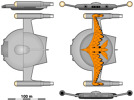 Orthographic views |
 Deck plans, part 1 created by Allen Rolfes (see notes) |
 Deck plans, part 2 created by Allen Rolfes (see notes) |
Displacement: 160,000 t
| Overall | 1° Hull | 2° Hull | Nacelles | |
| Length [m] | 138.10 | 58.08 | 66.64 | 104.09 |
| Beam [m] | 193.27 | 111.28 | 92.46 | 14.07 |
| Draft [m] | 22.65 | 20.05 | 20.05 | 14.07 |
Crew complement: 190 crew + 300 troops
Weapons: 1 plasma cannon, 2 missile launchers with 100+ missiles, 2 laser cannons
Velocity: wf 4.0, cruise; wf 5.1, supercruise; wf 5.3, maximum
Units commissioned: 125+
*All specifications are estimates unless otherwise noted.
The design of the Capsize-class cruisers, introduced in 2225, reflected a further development of trends established in 2175 with the Cataract class, the Romulans' first postwar cruisers. The engineering portion of the hull continued to become larger, and the impulse deck grew wider. The nacelles, which again strongly resembled Federation nacelles, this time those of the Lancaster class, were separated from the hull by 40-m-long pylons.
Although most of these developments were evolutionary, a truly startling development first appeared in this class: the cloaking device. The cloaking device was the culmination of decades of Romulan research into sensor countermeasures. Owing to their continued reluctance or inability to develop faster ships powered by M/AM reactors after the war, the Romulans wisely began to concentrate their research efforts in fields that were more likely to yield immediate applications. During the war, an estimated 50% of Romulan research funds were devoted to futile attempts to develop exotic energy sources, including artificial quantum singularities. As not to repeat this error, postwar research was concentrated in six major areas: fusion reactors, warp dynamics, sensor countermeasures (including cloaking systems), missile propulsion and warheads, beam weaponry, and energetic shielding. While some funds were devoted to artificial quantum singularities, the Romulans recognized that this avenue of research was unlikely to produce applications in the near term.
One success of this emphasis on applicable research was the cloaking device. Cloaking devices introduced in the 2220s are more accurately described as cloaking systems of sensor countermeasures built into the structure of the ship. These systems comprised such technologies as subspace field masking, sensor-absorbent hull panels, reflective projection, and sensor-profile source compensation. The earliest cloaks required so much energy that the warp drive, energetic shielding, sensors, and the plasma cannon could not be used when the cloak was engaged. Such energy demands naturally limited the tactical situations in which the cloak could be used. However, the system was well suited for extremely close range ambush attacks with plasma cannons or fusion-tipped missiles.
A typical attack was that on a Klingon convoy in 2234. Because of recent Romulan attacks, six Klingon transports were being escorted by two E7-class destroyers to the Khitomer colony. As they dropped out of warp near the asteroid belt of the Rura Kolak system to rendezvous with another escort and three additional transports, a Capsize-class cruiser suddenly decloaked at the head of the Klingon column. It fired its plasma cannon from a range of less than 10 km, obliterating the lead Klingon destroyer, and immediately recloaked. It reappeared behind the column and dispatched the second Klingon destroyer. Five of the six transports were also destroyed before the Romulan raider was driven off by additional Klingon warships. They reported that they had destroyed the Romulan ship but that the debris was "cloaked" and, therefore, unrecoverable!
By the 2260s, cloaking devices had taken the form of a man-transportable, easily installed module approximately 1 m in length. One such device was obtained in a covert mission by the Constitution-class USS Enterprise (NCC-1701) in 2268.
![]() Cricket-class Cruisers*
Cricket-class Cruisers*![]()
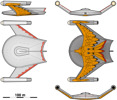 Orthographic views |
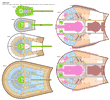 Deck plans, part 1 created by Allen Rolfes (see notes) |
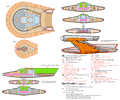 Deck plans, part 2 created by Allen Rolfes (see notes) |
Displacement: 140,000 t
| Overall | Hull | Nacelles | |
| Length [m] | 131.01 | 31.01 | 100.60 |
| Beam [m] | 234.06 | 102.61 | 12.90 |
| Draft [m] | 33.47 | 25.17 | 12.90 |
Crew complement: 150 crew + 300 troops
Weapons: 1 plasma cannon, 2 missile launchers with 120+ "Mitten" offensive/defensive missiles
Velocity: wf 4.4, cruise; wf 5.5, supercruise; wf 5.7, maximum
Units commissioned: 45+
*All specifications are estimates unless otherwise noted.
After more than a century behind the Neutral Zone, the Romulans emerged to test the Federation in 2266 with a daring cross-border raid by a single Cricket-class cruiser. Although the Romulan ship was ultimately destroyed by USS Enterprise (NCC-1701), it showed itself to be a formidable combat vessel when under the command of a resourceful and audacious captain.
Unlike most previous Romulan ships, which had clearly distinguished command and engineering sections, the Cricket class had a single unified hull. However, the fusion reactor was still a horizontal tokomak and the impulse drive was still mounted in a wide housing at the rear of the ship. The bridge citadel atop the hull became larger and was now dotted with several dozen ports. The nacelles were separated from the hull on wide-based, 65-m-long wings.
Although the Cricket was powered by a fusion reactor, it could reach a maximum speed of wf 5.7. It could likely sustain this speed for less than 10 ly. However, this range was sufficient for the Cricket to steal across the Neutral Zone while cloaked, destroy four Federation outpost stations with its plasma cannon, then attempt to return to Romulan space. Enterprise, under the command of Captain James T. Kirk, outmaneuvered and severely damaged the Romulan raider, which self-destructed to avoid capture.
This ship, better known as the Romulan "Bird of Prey," was withdrawn from front-line service after the Romulans allied themselves with the Klingons and began to receive the M/AM-powered D7-class cruisers. However, it made a strong impression in its few encounters with Starfleet because of its devastating plasma cannon. Unlike all other energetic weapons known at that time, the Romulan plasma cannon carried by Cricket was capable of supraluminal speeds. After-action analysis by Starfleet concluded that the plasma bolt was contained by a non-self-sustaining warp field that would dissipate after approximately 1.2 minutes. Enterprise retreated at its maximum speed of wf 8 to a distance of some 70 au and escaped undamaged when the plasma bolt dropped out of warp and harmlessly dispersed. However, at ranges of 5 au or less, the cannon was a weapon of overwhelming destructive power. In the Neutral Zone raid of 2266, the Cricket obliterated rodinium-shielded Federation outposts buried more than 1.5 kilometers within iron asteroids. The Federation had no weapon remotely approaching this level of power. However, the weapon's rate of fire was extremely low owing to the enormous amounts of plasma expended and was, of course, unguided. As with previous generations of Romulan warships, the plasma cannon could not be fired when the cloak was engaged.
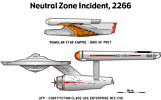
Ships involved into the Neutral Zone Incident, 2266
Although the Neutral Zone incident of 2266 was Starfleet's first encounter with the Romulan cloaking device, it was not as effective as the Romulans had hoped. Probably because Federation sensors were significantly more sensitive than either Romulan or Klingon sensors, Enterprise was able to track the Cricket without herself being detected. Although cloaking technology continues to improve, sensor technology also improves such that a given type of cloak is usually not effective for more than a few years.
The Cricket class marked an end to a century-long lineage of Romulan cruisers. With the introduction of Klingon D7-class cruisers in 2264, the Romulans finally acquired M/AM reactors and began to build their ships more along Klingon lines.
![]()